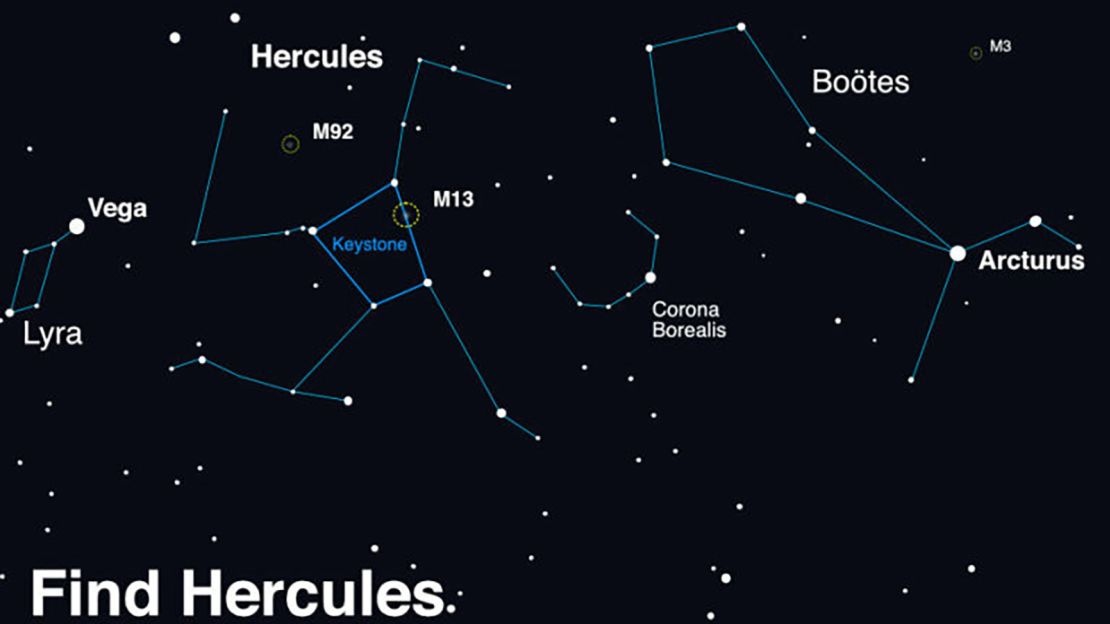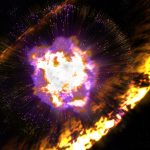Key takeaways
- A “new star” is expected to appear in the night sky between now and September, a rare event that could inspire many new astronomers.
- A nova is a sudden, short explosion of a collapsed star called a white dwarf, different from a supernova, which is the death of a large star.
- The nova will occur in the Milky Way’s Corona Borealis constellation, which is situated between the Boötes and Hercules constellations.
- The star system T Coronae Borealis, known as the “Blaze Star,” last had a major eruption in 1946 and is expected to have another soon.
- The nova will be visible from the Northern Hemisphere and could shine as brightly as the North Star, visible to the naked eye for a few days.
CNN – According to NASA, a “new star” is expected to arise in the night sky between now and September in a celestial event that has been predicted for years.
“It’s a once-in-a-lifetime event that will create a lot of new astronomers out there, giving young people a cosmic event they can observe for themselves, ask their own questions, and collect their own data,” said Dr. Rebekah Hounsell, an assistant research scientist specializing in nova events at NASA’s Goddard Space Flight Center in Greenbelt, Maryland. “It’ll fuel the next generation of scientists.”
The projected brightening event, known as a nova, will take place in the Milky Way’s Corona Borealis, or Northern Crown constellation, which lies between the Boötes and Hercules constellations.
A supernova is the cataclysmic death of a large star, whereas a nova is the quick, short explosion of a collapsed star called a white dwarf. The dwarf star stays intact, releasing material in a continuous cycle that can last thousands of years.
“There are a few recurrent novae with very short cycles, but typically, we don’t often see a repeated outburst in a human lifetime, and rarely one so relatively close to our own system,” Hounsell explained. “It’s incredibly exciting to have this front-row seat.”
T Coronae Borealis, often known as the “Blaze Star,” is a binary system in the Corona Borealis containing a dead white dwarf star and an aged red giant star. Red giants emerge when stars run out of hydrogen for nuclear fusion and start to die. Our sun will become a red giant in around 5 billion or 6 billion years, blowing out and expanding as it sheds layers of material and possibly evaporating the solar system’s inner planets, though the destiny of Earth is unknown, according to NASA.
Every 80 years or so, T Coronae Borealis has an explosive eruption.
The stars in the orbital pair are close enough to interact strongly. As the red giant heats up, it becomes more unstable, shedding its outer layers, which fall to the white dwarf star as matter.
According to the space agency, the interchange of stuff leads the white dwarf’s atmosphere to steadily heat until it encounters a “runaway thermonuclear reaction,” which results in a nova, as shown in the animation below.
Keep an eye on the shifting sky
A nova was erupting from T Coronae Borealis in the fall of 1217 when a man named Burchard, abbot of Ursberg, Germany, observed “a faint star that for a time shone with great light,” according to NASA. It was the first documented sighting of the Blaze Star.
T Coronae Borealis last had a spectacular outburst in 1946, and scientists are keeping a close check on the star system once more.
“Most novae happen unexpectedly, without warning,” stated William J. Cooke, NASA Meteoroid Environments Office lead, in an email. “However, T Coronae Borealis is one of ten recurrent novae in the galaxy. We know from the previous eruption in 1946 that the star would fade for a little more than a year before dramatically rising in brightness. Coronae Borealis began to decline in March of last year, and some researchers predict it will become nova between now and September. But the uncertainty about when this will occur is several months; we can’t do better than that with what we know now.”
The star system, situated 3,000 light-years from Earth and usually too faint to be viewed with the naked eye, is predicted to reach a level of brightness similar to that of Polaris, or the North Star.
Once the nova reaches its maximum brightness, it will appear as a new star, visible for a few days without equipment and a little more than a week with binoculars before dimming and disappearing for another 80 years or more.
The nova will occur in a narrow arc between the constellations Boötes and Hercules, visible from the Northern Hemisphere.

“The Northern Crown is a horseshoe-shaped curve of stars west of the Hercules constellation, ideally spotted on clear nights,” according to a NASA announcement. “It can be identified by locating the two brightest stars in the Northern Hemisphere — Arcturus and Vega — and tracking a straight line from one to the other, which will lead skywatchers to Hercules and the Corona Borealis.”
Global observations
Dr. Elizabeth Hays, chief of NASA Goddard’s Astroparticle Physics Laboratory, predicted that the event will be fascinating for amateur astronomers.
“Citizen scientists and space enthusiasts are always looking for those strong, bright signals that identify nova events and other phenomena,” Hays stated. “Using social media and email, they’ll send out quick notifications, and the flag will rise. We’re depending on the worldwide community to interact again with T CrB.”
Astronomers will study the nova with a variety of ground- and space-based observatories, and data from citizen scientists may also assist astronomers put together what happened before to the explosion, according to Hounsell.
Normally, nova events are so far away and weak that it’s impossible to see the entire image of the explosion, but “this one will be really close, with a lot of eyes on it,” Hays said.
“Studying recurring novae like T Coronae Borealis help us understand the mass transfer between the stars in these systems and provide insights into the thermonuclear runaway that occurs on the surface of the white dwarf when the star goes nova,” Cooke stated.
Cooke recalls that the last nova he saw, Nova Cygni in 1975, was about the same brightness as T Coronae Borealis. Nova Cygni is not likely to explode again.
“I was a teenage astronomy geek about to start college and was outside on the night of August 29,” Cooke said. “Looking up at the sky, I realized that the Cygnus constellation was misaligned; there was a star that shouldn’t be there. After tolerating some comments from friends who thought I was insane, I convinced them to investigate, and we discovered that we were staring at a nova! It was a great event that confirmed my decision to pursue a career in astronomy. I used to joke that a star had to burst to have me get through undergraduate physics.”
While T Coronae Borealis may not explode by September, astronomers intend to keep an eye on it in case it does.
“Recurrent novae are unpredictable and contrarian,” Dr. Koji Mukai, an astrophysics researcher at NASA Goddard, said in a statement. “When you believe there can’t possibly be a reason why they follow a specific fixed pattern, they do—and as soon as you start to rely on them following the same pattern, they depart totally. “We’ll see how T CrB behaves.”


